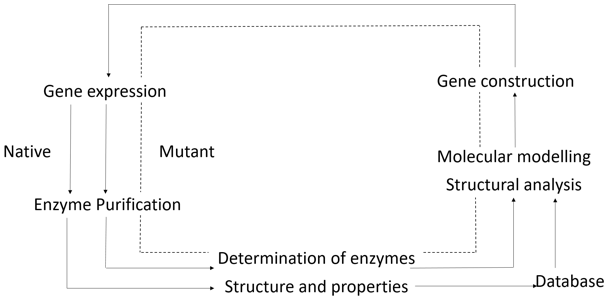Enzyme Technology Future Prospects(Enzyme Technology ) Questions and Answers
Explanation:-
Answer: Option A. -> Primary amines alkylated with 1-iodododecane and 4(5)-chloromethylimidazoleAnswer: (a).Primary amines alkylated with 1-iodododecane and 4(5)-chloromethylimidazole
Explanation:-
Answer: Option D. -> Synthesis of cyclodextrins from starch by the cyclomaltodextrin glucanotransferase from Bacillus maceransAnswer: (d).Synthesis of cyclodextrins from starch by the cyclomaltodextrin glucanotransferase from Bacillus macerans
